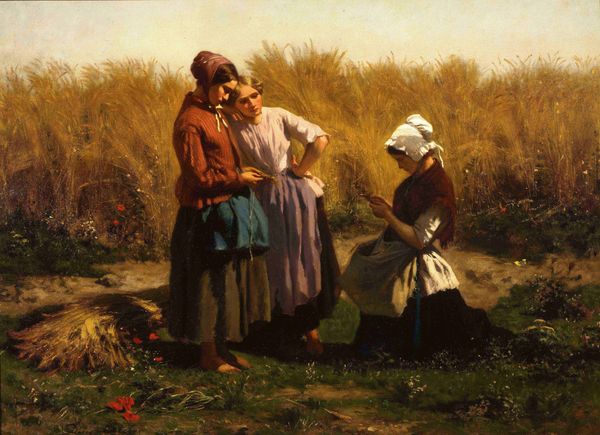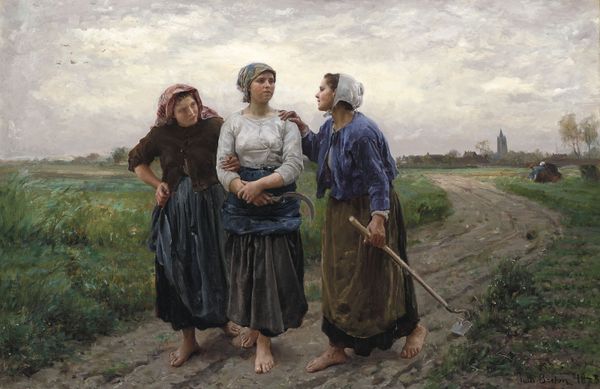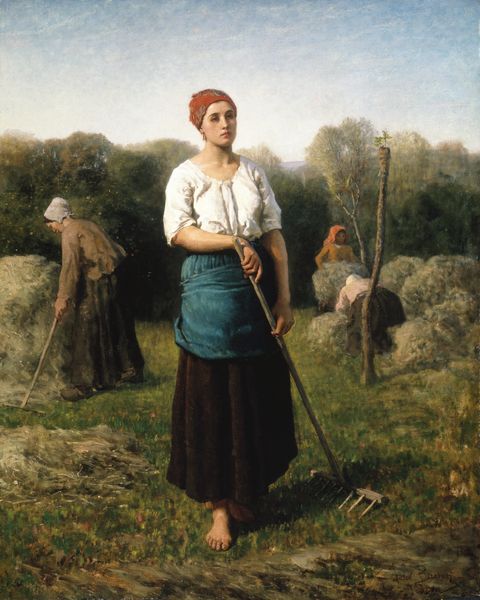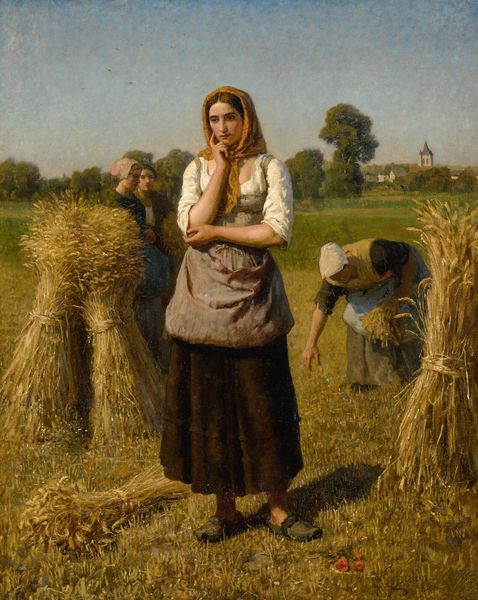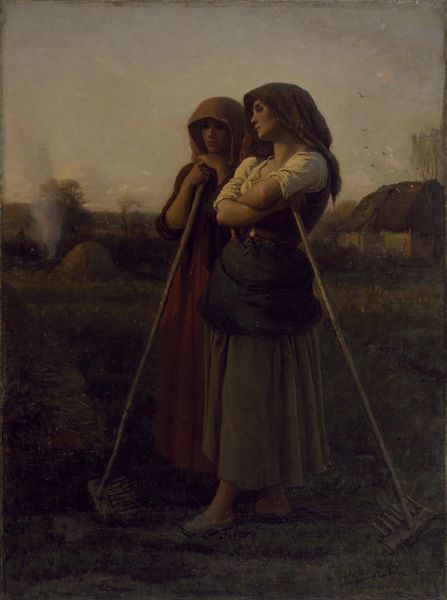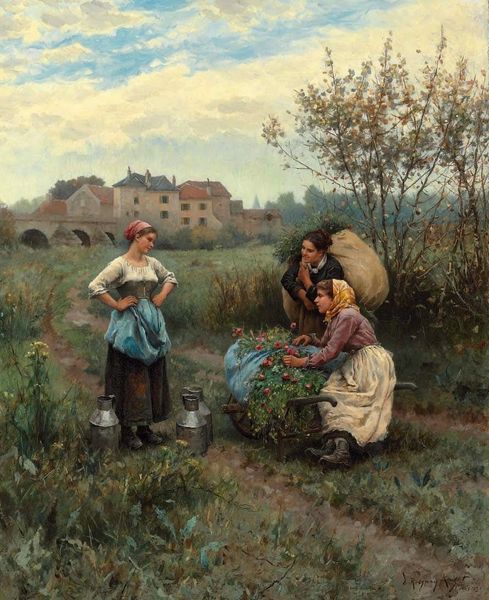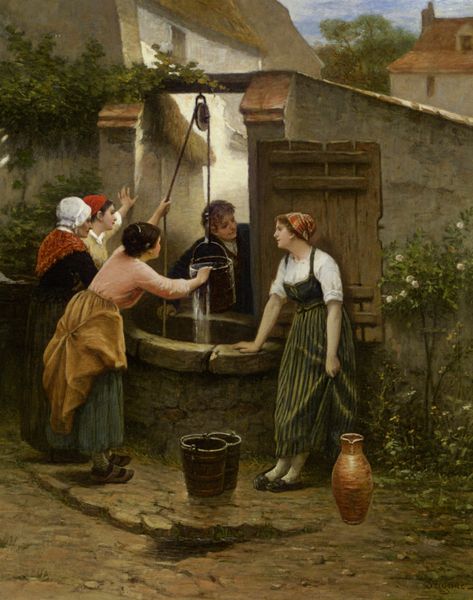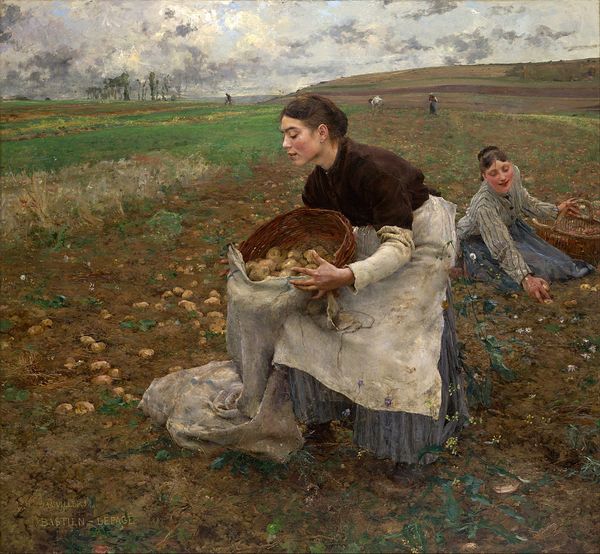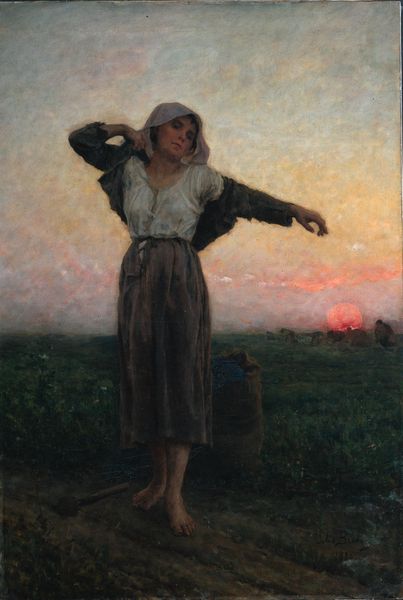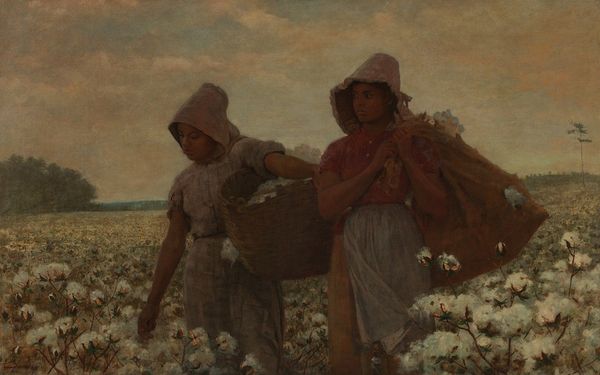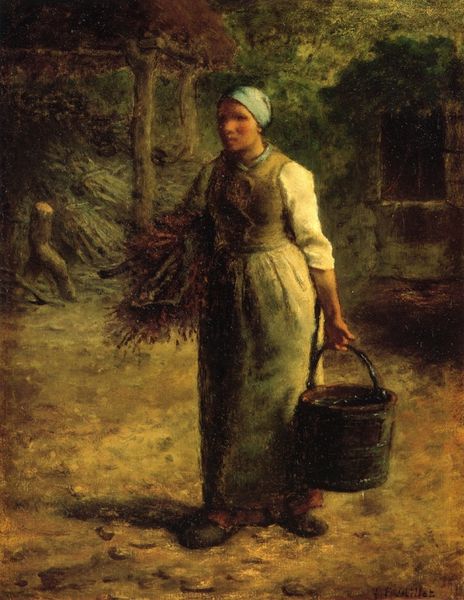
Two young woman picking grapes (Study for „The vintage at Château Lagrange“) 1862
0:00
0:00
julesbreton
Joslyn Art Museum,Omaha, NE, US
Dimensions: 59.1 x 48.9 cm
Copyright: Public domain
Curator: Jules Breton created this oil study, titled "Two young woman picking grapes (Study for \u201eThe vintage at Château Lagrange\u201c)," in 1862, here in the Joslyn Art Museum. It precedes his larger work. Editor: My first impression is of a rather somber, yet intimate moment. The color palette is restrained, dominated by earth tones. The weight these women carry isn't just the baskets; there's something in their gaze. Curator: Yes, Breton, known for his representations of rural life, often portrayed peasant women with a sense of dignity rather than romanticizing them, which was quite typical at that time. This painting allows us to consider how those laboring in vineyards experienced their lives in the 19th century. Editor: I wonder about the agency these women possessed. While Breton may avoid idealizing them, his gaze, inevitably male, and that of the presumed male viewers, colors our perceptions. Are they truly visible, or are we just seeing what the dominant culture projects onto them? The context of exploitation within agricultural labor has to be accounted for, and what the piece hides or reveals of the lived experiences of those women. Curator: Well, this was a study, a preliminary piece. Breton was likely capturing a specific moment, a certain light, or even the posture of the women. Consider this artwork as an aesthetic study as opposed to an explicitly sociopolitical narrative. Editor: Yet, even in its studied form, choices are made about representation. What details are highlighted, which are omitted? Even studies contribute to the broader narratives we construct around labor, gender, and class. How were such artworks initially exhibited and received? Understanding the mechanisms of display and critique during Breton’s time is essential. Curator: These images contributed to constructing ideas of Frenchness as it emerged during that century. Such paintings circulated among middle class viewers who likely were distant from such agrarian realities. Editor: Right, it begs us to question what stories get told and by whom. Breton offers us an image but, we must actively question whose reality it mirrors. I appreciate the painting's textures, even as it forces me to consider these power dynamics inherent in representation. Curator: It highlights, in a very concentrated form, the complexities behind representations of labour.
Comments
No comments
Be the first to comment and join the conversation on the ultimate creative platform.
